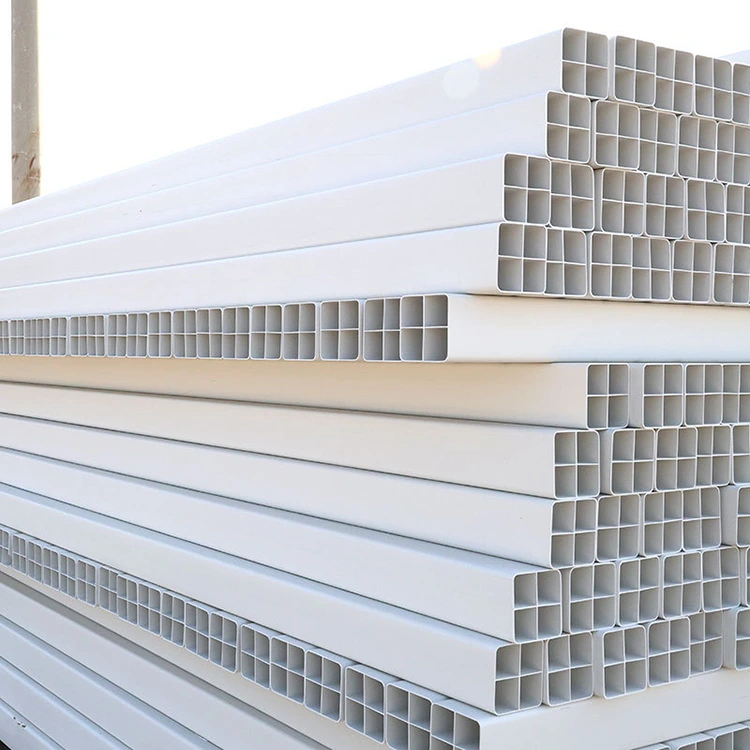Why Is PVC Pipe the Preferred Choice for Modern Construction and Water Systems?
2025-10-22
PVC Pipe has become an essential material in modern engineering, plumbing, and infrastructure systems. Its remarkable durability, affordability, and versatility have made it the go-to solution for water distribution, drainage, and industrial applications. As someone who has worked with various piping materials, I often ask myself: What truly sets PVC Pipe apart from others? Let's explore its characteristics, advantages, and applications in detail.
What Makes PVC Pipe So Widely Used?
PVC (Polyvinyl Chloride) Pipe is a synthetic plastic polymer widely used for both industrial and residential piping systems. Its main advantage lies in its excellent combination of chemical resistance, smooth internal surface, and lightweight structure. Unlike metal pipes, PVC Pipe doesn't corrode, rust, or scale over time, which ensures a long service life with minimal maintenance.
Another significant factor is its ease of installation. Because PVC Pipe is lightweight, it can be easily transported and installed without heavy machinery. Its joining methods, such as solvent cementing or gasketed fittings, ensure leak-free connections, making it an efficient choice for modern infrastructure.
How Does PVC Pipe Perform in Different Applications?
PVC Pipe is designed for diverse uses — from clean water delivery to wastewater management and cable protection. Its flexibility and adaptability allow engineers to apply it across industries such as:
-
Water Supply Networks: For distributing potable water with minimal contamination risk.
-
Sewage and Drainage Systems: Excellent resistance to chemical effluents and abrasion.
-
Irrigation Systems: Durable and cost-effective solution for agricultural fields.
-
Industrial Piping: Resistant to acids, alkalis, and salts found in chemical processing.
-
Electrical Conduits: Provides insulation and protection for cables and wires.
PVC Pipe's long lifespan—often exceeding 50 years—makes it an economical investment for large-scale projects.
Technical Specifications of PVC Pipe
The following table presents a simplified overview of common parameters used to define PVC Pipe standards in industrial and civil engineering:
| Parameter | Specification | Description |
|---|---|---|
| Material | Unplasticized Polyvinyl Chloride (uPVC) | Rigid and strong plastic polymer |
| Diameter Range | 16 mm – 630 mm | Suitable for domestic to industrial systems |
| Working Pressure | 0.6 MPa – 2.5 MPa | Designed for both low and high-pressure applications |
| Temperature Range | 0°C – 60°C | Stable under moderate heat conditions |
| Color Options | White / Grey / Blue | Based on application or preference |
| Length | Standard 4 m – 6 m | Can be customized for project needs |
| Connection Type | Solvent weld / Rubber ring joint | Leak-proof and easy assembly |
| Standards | ISO 1452, ASTM D1785, BS 3505 | Internationally recognized certifications |
What Are the Key Advantages of PVC Pipe?
-
Corrosion Resistance – Unlike steel or iron pipes, PVC Pipe remains unaffected by chemical reactions, ensuring a long-lasting and stable flow.
-
Lightweight and Easy Handling – Its low weight reduces transportation costs and simplifies installation.
-
Smooth Interior Surface – Reduces friction loss and maintains consistent water pressure.
-
Environmental Friendliness – PVC is recyclable and requires less energy to produce compared to metal alternatives.
-
Cost-Effectiveness – With lower installation and maintenance expenses, PVC Pipe offers exceptional value.
How Does PVC Pipe Compare with Other Materials?
| Feature | PVC Pipe | Steel Pipe | Concrete Pipe |
|---|---|---|---|
| Weight | Very Light | Heavy | Very Heavy |
| Corrosion Resistance | Excellent | Poor (needs coating) | Moderate |
| Durability | 50+ years | 20–30 years | 30–50 years |
| Maintenance Cost | Low | High | Medium |
| Installation Speed | Fast | Slow | Slow |
PVC Pipe clearly offers superior advantages for both cost and performance, making it a practical solution for modern infrastructure projects.
FAQ: Common Questions About PVC Pipe
Q1: What is the lifespan of PVC Pipe in normal water supply conditions?
A1: PVC Pipe can last over 50 years under standard conditions. Its corrosion resistance and smooth interior ensure stable performance even in harsh environments.
Q2: Can PVC Pipe handle high temperatures or hot water?
A2: PVC Pipe performs best at temperatures below 60°C. For applications involving hot water or steam, CPVC (Chlorinated PVC) is recommended.
Q3: How can I join or connect PVC Pipe efficiently?
A3: There are two main connection methods: solvent cement joining (for smaller pipes) and rubber ring joints (for larger pipes). Both provide a secure and leak-free seal.
Q4: Is PVC Pipe safe for drinking water systems?
A4: Yes. PVC Pipe manufactured according to international standards such as ISO 1452 and ASTM D1785 is safe for potable water, as it does not leach harmful chemicals.
Why Is PVC Pipe an Economical and Sustainable Choice?
From both an engineering and environmental perspective, PVC Pipe stands out for its sustainability. It consumes less energy in production, reduces greenhouse gas emissions, and can be recycled into new piping or construction materials. Its long lifespan means fewer replacements and less waste over time.
When combined with its reliability, low maintenance, and cost efficiency, PVC Pipe becomes an ideal choice for modern infrastructure planning — especially for urban water supply networks and agricultural systems that demand performance and longevity.
Why Choose Hebei Xiong'an East Boom Engineering Materials Trade Co., Ltd. for Your PVC Pipe Needs?
At Hebei Xiong'an East Boom Engineering Materials Trade Co., Ltd., we specialize in producing high-quality PVC Pipe that meets global standards for performance and safety. Our manufacturing process ensures consistency, durability, and eco-friendly results that align with the needs of construction, agriculture, and industrial sectors.
Whether you're planning a new irrigation project, upgrading a water system, or managing industrial fluid transport, our team can help you select the right PVC Pipe solution tailored to your project requirements.
Contact us today to learn more about our product specifications, pricing, and customized service options. Let us provide you with durable and sustainable piping solutions that truly last.





